Above image: © Magryt
You’ve probably heard the word “sustainability” a lot recently. Nowadays, it seems to pop up every time I shop online. More brands than ever are calling themselves sustainable, and even fast fashion companies such as Zara and ASOS have implemented eco-friendly initiatives that have transformed the way they create and sell clothing.
But what exactly does it mean to be sustainable? And why does sustainability matter?
If you’re a regular to the Esty Lingerie blog, you know how much we love lingerie. We keep track of the latest trends, and we’re always looking for new brands to check out. There is a seemingly endless supply of gorgeous, well-crafted lingerie out there, and that means I’m always on the lookout for my next purchase. But as I become more environmentally-conscious, I’ve had to ask myself how my lingerie obsession has impacted the rest of the world.
As it turns out, the impact hasn’t been light. The fashion industry creates environmental disasters at every level of production, from manufacturing to disposal. In fact, the industry is one of the largest polluters in the world, causing 20% of global industrial water pollution and accounting for 10% of global carbon emissions. Over 100 billion articles of clothing are created each year, many of them made from synthetic materials that take centuries to biodegrade. That means that, of the hundreds of thousands of tonnes of clothing UK consumers throw away every year, most will sit in landfills for generations to come. Over the past decade, these problems have only intensified as the demand for new clothing has increased.
Luckily, consumers have started to take notice of the environmental impact. In response, brands have taken to creating sustainable products to meet the rising demand for eco-friendly clothing. Unfortunately, not every brand is truly as eco-friendly as it says it is.
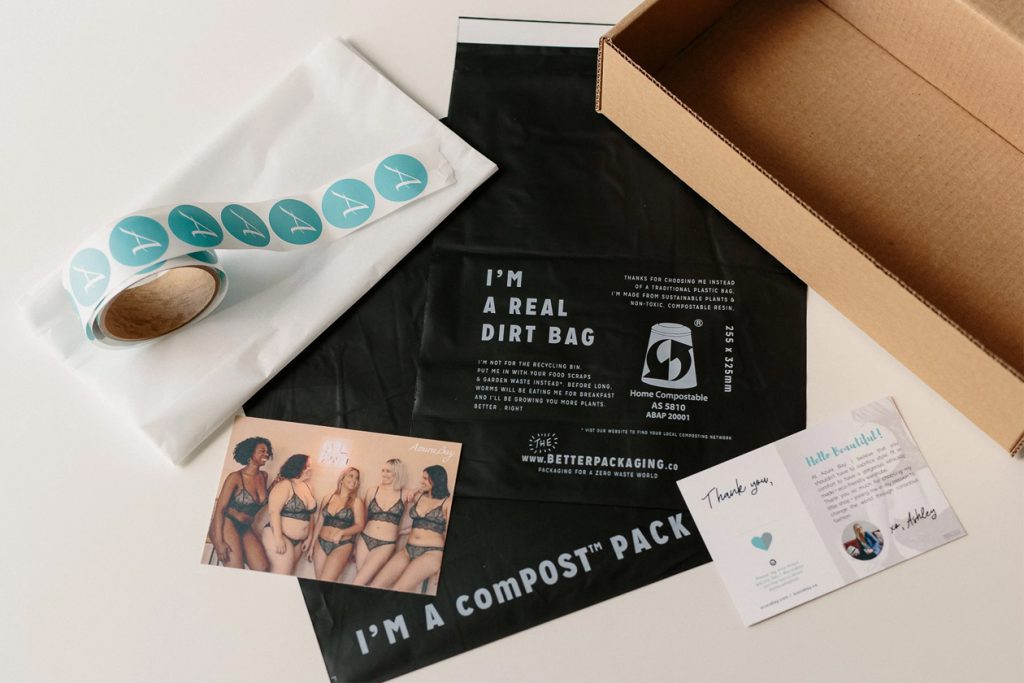
What is Greenwashing?
The term “greenwashing”, coined in the 1980s by the environmentalist Jay Westerveld, describes the act of companies grossly overstating the environmental benefits/intentions of their products. In the decades since this term was first used, brands have become experts at greenwashing their products, making it nearly impossible to determine how eco-friendly a brand really is. It’s a marketing strategy that can confuse even the most well-meaning buyer.
Unfortunately, there is no universal standard in the EU, UK, or the USA for what qualifies as ‘sustainable’ or ‘environmentally-conscious’ clothing. As a consumer, you have to determine how eco-friendly a product is on your own – and brands are great at advertising themselves to seem more sustainable than they actually are.
If this plays an important role in your clothes-buying decisions, navigating the buzzwords around sustainability is key. Words such as “ethical”, “sustainable”, “natural”, and “organic” are key to understanding the truth behind a brand’s claim.
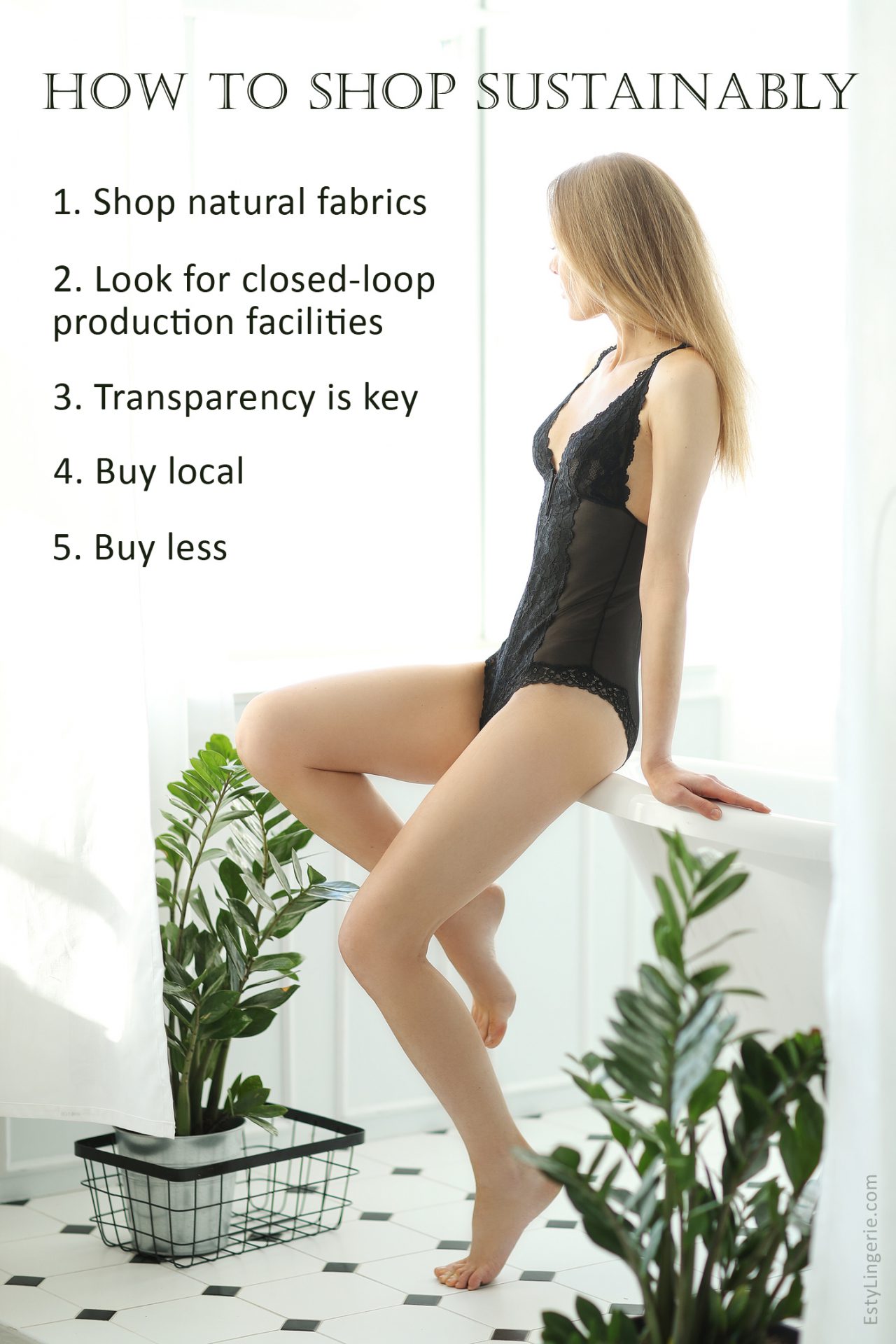
How to Buy Lingerie Sustainably
Here are some tips for shopping sustainably, without getting caught up in misleading buzzwords:
Shop natural fabrics. Natural fabrics such as silk, bamboo, hemp, linen, wool, and cotton are compostable and easily decompose. Natural fabrics also release fewer greenhouse gases in their production than synthetic fibres such as polyester, which is produced from fossil fuels. To make an even more environmentally-conscious decision, buy the natural fabrics that are organic to prevent pesticides from being released into the environment.
Look for closed-loop production facilities. In closed-loop production, companies keep any waste made from the creation of products, treat it, and reuse it. This prevents the dumping of toxic waste into soil and waterways.
Closed-loop production facilities are particularly important for bamboo. To make bamboo into a wearable fabric, bamboo pulp is processed with chemicals that are harmful to the environment unless the company utilises closed-loop production. The brands BARE and Boody both use closed-loop production to create super-soft and sustainable bamboo lingerie.
Transparency is key. Because there is so little regulation around clothing companies using the words “organic”, “chemical-free”, “natural”, “ethical”, or “sustainable” in advertising, it can seem downright impossible to know if a brand lives up to its label. That’s why transparency is the most important thing to look for in eco-friendly products.
Implementing green policies is costly and time-consuming, so any brands that have adopted these policies will want to tell you all about it. If a company doesn’t provide an explanation of its sustainability practices beyond using vague wording, there’s a good chance it’s greenwashing its products. On the other hand, lingerie companies that live up to their eco-friendly labels – including Naja, The End Label, Azura Bay, Brook There, and Studio Pia to name a few – feature in-depth information about their sustainability practices on their websites.
Buy local. The further away a product was made, the more CO2 was released into the atmosphere as it traveled to you.
Buy less. Of course, the most sustainable thing you can do is not buy anything. Trust me, as a lingerista, I know how hard that is to accept. But there are ways to buy fewer things, so you can still have the clothing you love, while avoiding impulse buys you’ll never wear. I’ve started giving myself a two week period to think about a product before I buy it. If, after two weeks, I’m still lusting after about that bra or those stockings, I’ll go back and buy it. This has been great for my wallet and my overflowing wardrobe, as well as the environment.
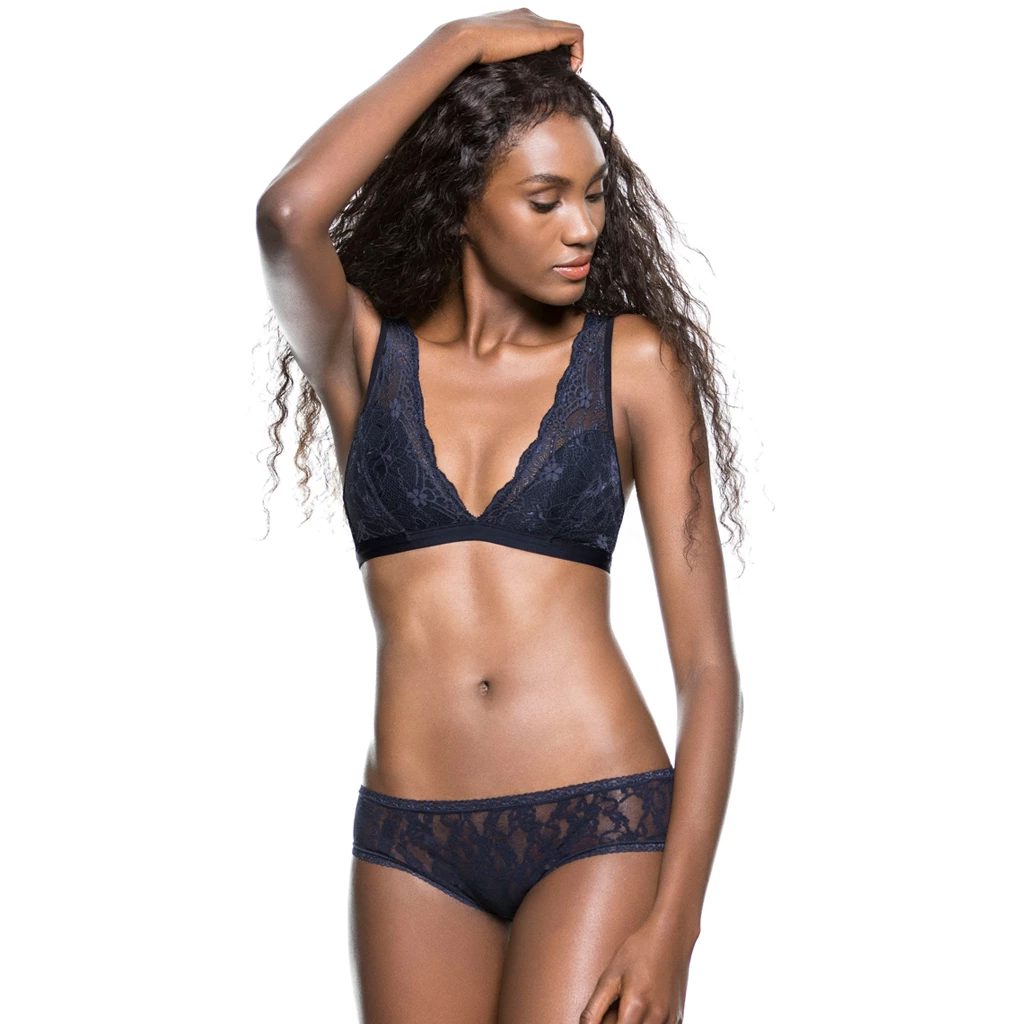
Sustainable vs. Ethical
Sustainability, workers’ rights, and animal rights often get lumped under the same umbrella. It’s easy to forget that being cruelty-free or fair trade doesn’t automatically mean a product is environmentally-conscious.
While many brands that produce sustainable fashion are also vegan, being vegan doesn’t always mean being eco-friendly. For example, vegan leather is generally made from petroleum-based synthetics that leach harmful chemicals into the environment upon creation and decomposition. Likewise, faux fur is typically made from plastic, which is not biodegradable.
Similarly, companies that are concerned about sustainability tend to also be concerned about workers’ rights, but the two don’t always go together. See companies such as H&M and the Gap: both have sustainability initiatives that significantly help the environment, but their fast fashion sweatshops remain among the worst violators of human rights.
To ensure a brand is both sustainable and ethical, check for specific information on each individual concern before you buy something.
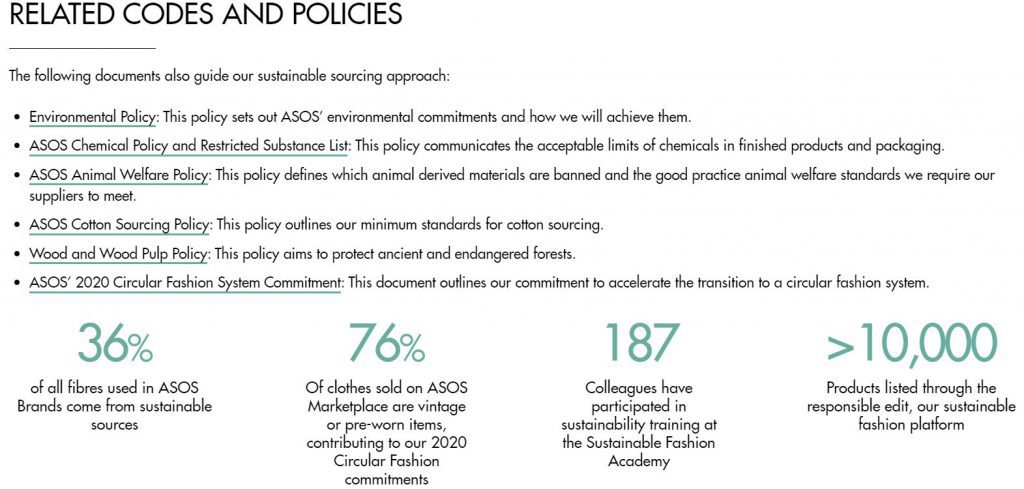
You might not be surprised to find that products that are ethical and/or sustainable generally cost more. Consider that money an investment in the health of the planet, your fellow humans, and yourself. Plus, slow fashion (buying high-quality items that are handmade close to home) means your clothes will last longer, another way to reduce your carbon footprint.
The best we can do is try to shop smart and stay on top of marketing techniques that try to mislead us. If that seems like a daunting task, don’t worry – every decision you make counts. Deciding not to buy that bodysuit that looks like five others in your closet, or choosing to buy from a company that manufactures its products right there in your city, are tiny changes that go a long way.
How do you try to shop for lingerie more sustainably?
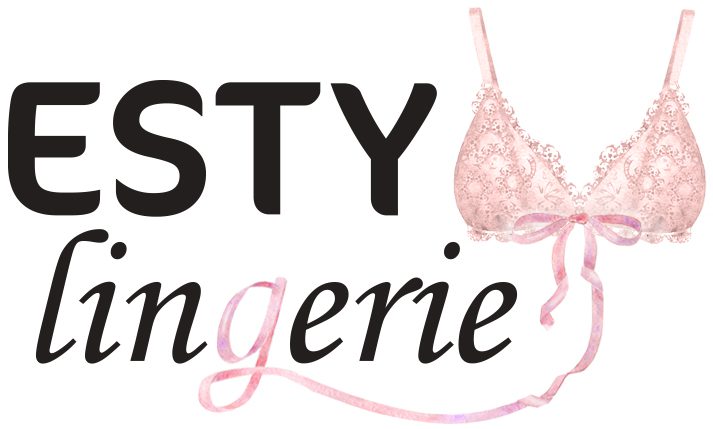

4 comments
This is a great guide, Eliza!
I’m pleased that you covered both the sustainability and ethical production angles. When people shop for sustainable and ethical clothing, they need to consider not only the products they are considering buying, but also that each dollar they spend is a vote of confidence in the business they are supporting in doing so. ‘Green’ and ‘ethical’ collections aren’t enough – we need wholesale change across the industry.
One point we always focus on when considering natural fibres at ColieCo is that there can be huge differences in the environmental credentials of different natural materials. You’ve rightly highlighted the need for us to see wider use of closed-loop processes in the production of bamboo fabrics, for example, but I’d also encourage people to look at the difference between the agricultural processes and their impacts on the environment: the mass production of non-organic cotton, for example, has a truly frightening impact on the environment and in our opinion shouldn’t be promoted above the use of many artificial fibres.
[…] This is the prediction I feel most confident making, because it’s just the way the wider fashion industry (and Western consumerism in general) is going. Which I’m very happy about! I think that this year, we’ll continue to see lingerie brand after lingerie brand launch their first ‘eco’ collection, or introduce new sustainability practises. Just remember that not every company putting out a press release about how eco-friendly they are is equally committed t…! […]
[…] after researching my article on how to avoid greenwashing, I was feeling disappointed in the sustainable options available on the market. There are brands […]
I see links to items by Agent Provocateur here. I recommend *not* recommending those products. A.P. is owned by Four Group Limited. Its environment rating is ‘very poor’; its labour rating is ‘very poor’. Its animal rating is ‘it’s a start’. This is not an ethical company.